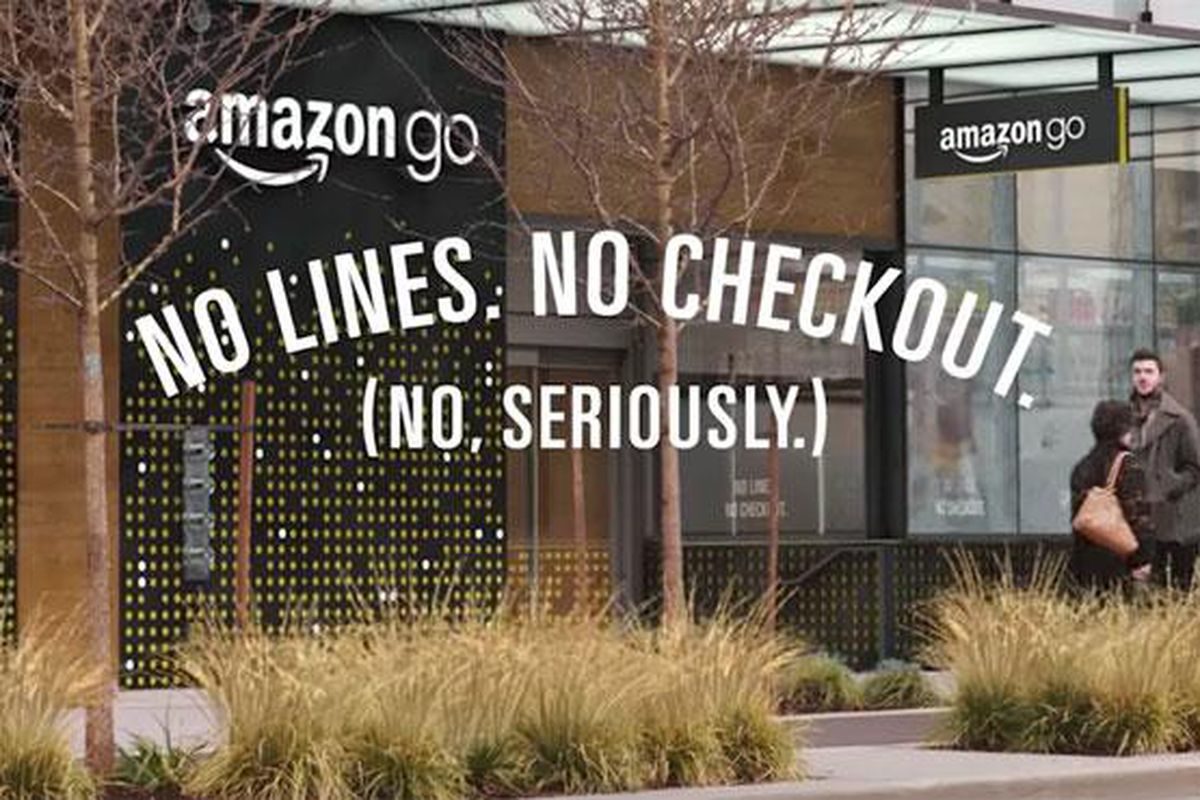Two extraordinary contrary scoops this summer: Albert Heijn has opened the first grocery store without cashier or check-out counters in the Netherlands last week (Ahold, 2019). Contrary, Jumbo launched special ‘chit-chat’ counters in their grocery stores this summer, especially for isolated people who would like to have more interaction with other people (Pauw, 2019). The digital development of digital shopping stimulates opposite developments in the meantime.
Amazon was the first company who unveiled a grocery store without lines and counters in 2016 (Garun, 2019). The concept is simple: customers can shop the items they want and just leave the shop. Special sensors and cameras detect which items the consumer has taken, and automatically charge the right price to the customers’ bank account. For the customer ‘it feels like shoplifting, except that you have to pay for it’. Those cashier-free stores will increase customer efficiency (no waiting lines) and for the company, it saves employees and adds the possibility to track customers more intensively.
The opposite development in the check-out counter-world is the ‘chitchat-cashier’ (Dutch: kletskassa). The purpose of this counter is extra personal attention. It started with a (successful) experiment at Jumbo two months ago, therefore it will be introduced in more stores. The cashier is less focused on the items and is more interested in a conversation with the customer. This is especially convenient for elderly and lonely people who would like more personal interaction (Pauw, 2019).
Those two styles of payment are serving different types of customers segments. The trend of casher-less counters is not bad at all. The trend of counter free stores leads to an appeal for extra personal interaction (Bolwijn, 2019). Grocery stores should not only focus on efficiency and customer data but as well on personal interaction. Stores should not replace ‘ordinary’ counters but add this feature as an extra option. From my perspective, the ideal stores have both types of cashiers.
References:
Ahold. (2018, 11 oktober). AH to go heeft Europese primeur met pin- en kassaloos shoppen. Geraadpleegd op 25 september 2019, van https://nieuws.ah.nl/ah-to-go-heeft-europese-primeur-met-pin–en-kassaloos-shoppen/
Bolwijn, M. (2019, 17 september). De supermarkt als buurtsoos voor wie om een praatje verlegen zit. Geraadpleegd op 25 september 2019, van https://www.volkskrant.nl/columns-opinie/de-supermarkt-als-buurtsoos-voor-wie-om-een-praatje-verlegen-zit~b910e99e/
Garun, N. (2016, 5 december). Amazon just launched a cashier-free convenience store. Geraadpleegd op 25 september 2019, van https://www.theverge.com/2016/12/5/13842592/amazon-go-new-cashier-less-convenience-store
Pauw, M. (2019, 15 juli). Kletskassa bij Jumbo voor eenzame mensen: “Als het een succes wordt, volgen er meer”. Geraadpleegd op 25 september 2019, van https://www.rtlz.nl/business/ondernemen/artikel/4781081/jumbo-albert-heijn-ouderen-hulp-kletskassa-eenzaamheid


Interesting how you view two sides of the story with these interesting articles. I agree with you that it is important that stores keep the personal touch since there is still demand for this. Also, the demand for quick shopping should not be forgotten. An idea for the future might also be, stores without check out counters but with employers in the store to help and chit-chat with people who seek personal interaction.
I agree with you and Sven that there is a customer segment that desires the personal interaction, not only in grocery stores but I think in all stores in general. Especially given the fact that the amount of elderly people is increasing in the Netherlands, giving these people extra attention is for sure a good thing. However, to what extent does this differ from the place in the store where people can enjoy a free coffee or thea and have a conversation with others? Only the ‘chitchat-cashier’ is missing in this setting. I am asking this, because most stores from Albert Heijn actually have this.
I really like the article you wrote Emiel. As Sven mentioned, I also find it interesting how you sketch the two contradictory sides of consumer preferences during grocery shopping. I have been reading a lot about this topic lately and I really do see a future in shops which eliminate the physical activity of paying. As you mentioned already, these stores add value to the customer as they do not have to stand in line anymore for example. However, indeed this new way of shopping is creating a next level for people to isolate themselves in their own world. The same applies for online grocery shopping, where people do not even have to go outside their houses anymore.
I think the grocery stores will change their strategy in the future where they decide to differentiate into either a store without any cash desks where people walk in and out to do their groceries, or they choose to fully focus on giving consumers the best in-store shopping experience with more social interaction. In this situation people can choose to either make a quick visit at a grocery store by walking in and out, or to get an in-store shopping experience by getting advices for recipes for example. Besides the trend of online grocery shopping will also keep on growing.